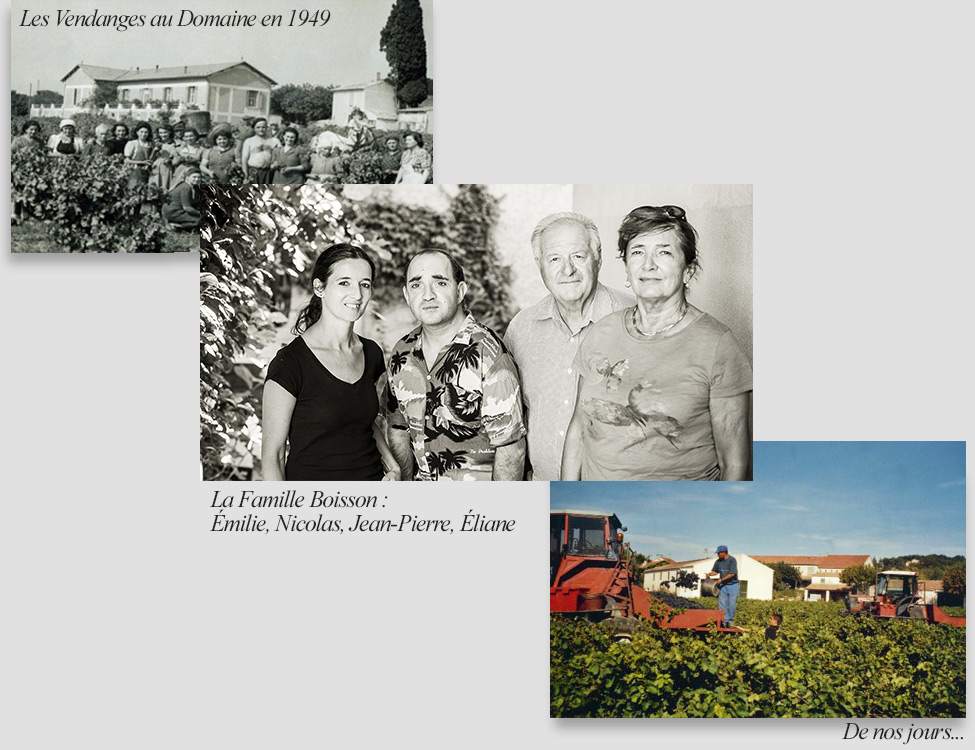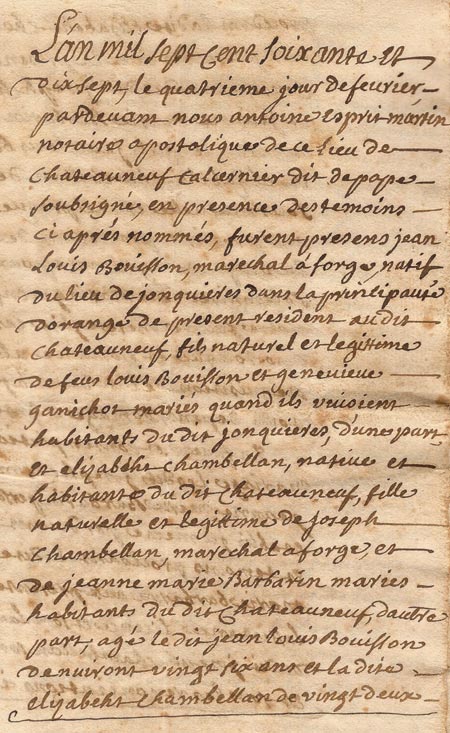|
In the old times, my family members, the Boisson, had two jobs at once: they were both wine-makers and black-smiths. The name of our estate comes from this second profession, because the nails used to fix the shoe under the horse's foot are called, in our regional language, a caboche. It was, at the time, the nickname used to call the Boisson family. Only my father, Teophile, fatherless at age 3, could not learn the duty of a black-smith. On the other hand, his mother, who was in charge of the estate, raised him to love the vines and wine, and so he became a wine-maker as well, just like his ancestors. Still, he kept the nickname “cabocheâ€. That is how the first bottles of the Domaine du Père Caboche appeared. |
|
 |
|
|
A long time before all this, our vineyard belonged to the Chambellan family. In 1777, my ancestor, Jean-Louis Boisson, married Elisabeth Chambellan and so became vine-grower in Châteauneuf du Pape. Since then, we have had parcels that have remained in the family, without there being any exchange or sale. The vines which are still there now are over 100 years old and produce an outstanding wine. The oldest parcel was planted in 1906. As a tribute and thanks to Elisabeth, we are today vine-growers from father to son and daughter.
|
|
|
Original Wedding act extract of |
|
| Our Estate is therefore the fruit of a long line of winegrowers passionate about their profession, who have passed on their know-how to us. Today I am proud to perpetuate the tradition of my ancestors with my children, Nicolas and Emilie, in a property that has remained family-run. We take the greatest care in the cultivation of our vines, always respecting tradition but also with a view to protecting the environment. It is also in the same spirit that we vinify and age our wines, so that they best reflect their terroir and the work of the winemaker. | |

Last news :
-
WINE SHOP OPEN ...
You are warmly welcome to visit us ... WINE SHOP - 1 rue Joseph Ducos - Châteauneuf-du-Pape : From... -
New medals ...
GOLD medal "COUP DE COEUR" Châteauneuf-du-Pape red 2022 Vieilles Vignes "Elisabeth Chambellan" GOL...












